Salesforce Admin Beginner Guide
Why Choose Salesforce Admin
Salesforce is a CRM platform and inquired further about it. Explained how Salesforce serves as an effective Customer Relationship Management (CRM) tool and that being a Salesforce Admin gives organisations more opportunity to develop stronger customer relations.
Salesforce stands apart, making the Salesforce Admin role highly impactful, thanks to their deep knowledge of the product lifecycle — from lead generation through lead management, marketing, sales, and customer support.
Salesforce Admins don’t just set up and configure their platform; they also optimise it.

From improving sales processes to offering better support through Service Cloud features, their efforts make a direct contribution to their organisation’s success.
Salesforce Admin
Salesforce Admin work. Hearing their excitement reminded me that taking that first step into the Salesforce ecosystem can be a daunting experience.
Salesforce Admin roles are in high demand among organisations that interact directly with customers, as these systems need to run smoothly to meet business requirements.
Salesforce Admins ensure these systems run seamlessly, explicitly customised to a company’s business requirements.
Salesforce Admin tools but also to apply them to actual Salesforce projects as soon as she becomes proficient enough.
Reassured her that we would take this journey step by step, starting by building strong foundations before developing more advanced skills.
Understanding SaaS and PaaS from a Salesforce Admin Perspective
SaaS (Software as a Service) and PaaS (Platform as a Service) refer to Gmail is an example of SaaS that requires no download, while Salesforce includes both.
As a Salesforce Admin, you have access to prebuilt functionalities as well as the ability to create your apps on the Salesforce platform, giving your career as an Administrator an exciting, dynamic edge that guarantees long-term stability and growth.
Salesforce Admin Tools and Clouds
It frequently introduces new learners to concepts such as Sales Cloud and Service Cloud, demonstrating how Salesforce Admins utilise these tools to drive business results.
Anything related to sales falls under Sales Cloud while tools designed to serve customers more effectively belong in Service Cloud.
As a Salesforce Admin, I’ve experienced firsthand how these different clouds make it more straightforward and more impactful.
Marketing Cloud and Community Cloud (now Experience Cloud), each serves a specific business need; the Salesforce Admin is responsible for configuring them optimally to achieve maximum benefit for their company.
Experience Cloud as a Salesforce Admin
Salesforce Admin is using Experience Cloud. Even without knowledge in web programming languages or HTML/CSS design languages, she was easily able to build her website using point-and-click tools.
Salesforce Admins often help customers or partners build portals through Salesforce’s automatically generated URLs.
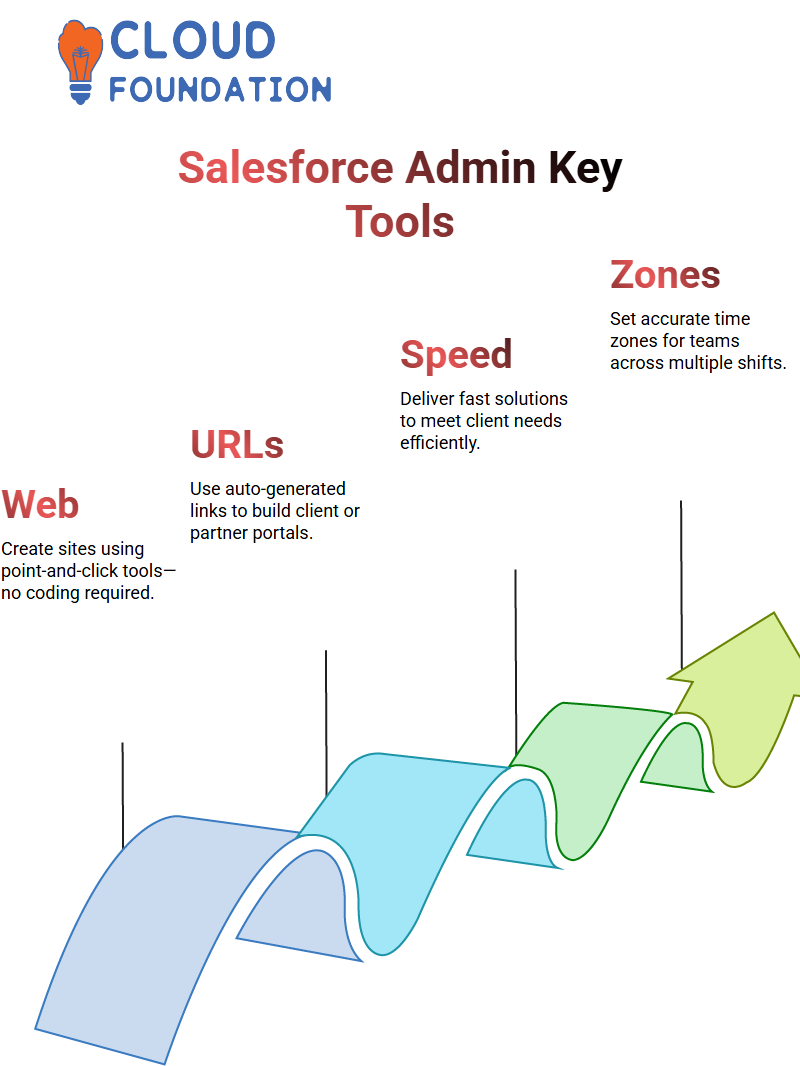
Because it empowers me to deliver solutions quickly and effectively for our clients.
Time Zones and Work Shifts for the Salesforce Admin
Time zones may seem trivial, but for me, as a Salesforce administrator, they’re essential.
When setting the local time zones based on team shifts—significant in India, where multiple shifts occur per day—ensure that the logs accurately reflect this configuration when users log on, as the configuration process is completed beforehand.
Unicode and Email Encoding for the Salesforce Admin
As an administrator of Salesforce.com, deal with Unicode encoding — specifically UTF formats — behind the scenes.
This ensures that all email communications and database entries remain readable across platforms.
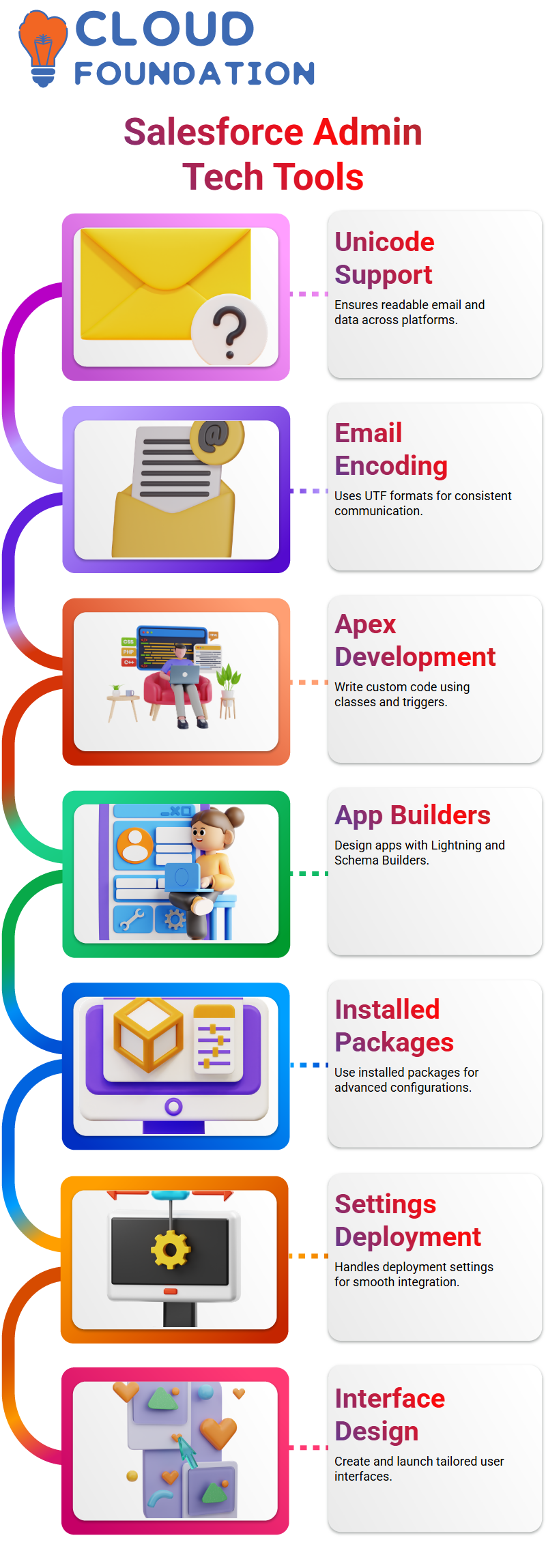
When configuring these settings, the data stored is in a standard format that is easily understood and can be interpreted by third-party systems.
Salesforce Admin Development Features: Apex and Lightning Builders
As part of Salesforce Admin duties, it use Apex classes, triggers, and tests for development purposes – these tools enable me to write custom code.
Working closely with developers ensures everything integrates smoothly. It works extensively with Lightning App Builder and Schema Builder tools.
These enable me to design and deploy custom interfaces and data models. Installed packages and deployment settings also form part of this arsenal of tools.
Salesforce Admin Workflow: Sandboxes and Deployment Stages
As a Salesforce Admin, utilise multiple sandbox environments, including Developer Sandboxes (DST), UAT Testing Environments, and Production.
As part of a structured process to maintain quality and minimise risks, make changes in the Developer sandbox first before moving them over to UAT for testing by end users, and once approved by them, to Production.
With this systematised approach, ensure quality while simultaneously mitigating risk.
Salesforce Admin Deployment: From Sandbox to Production
Deployment is one of the primary responsibilities for Salesforce administrators; however, deployment may be restricted in developer editions and trial accounts as these versions are intended for practice only and don’t support full deployment capabilities.
To facilitate deployment, typically utilise Salesforce Professional Edition or Essential Edition licenses; each user pays a monthly subscription fee, depending on the chosen edition.
Deployment Responsibilities as a Salesforce Admin
It ventured into Salesforce Admin, and it quickly became evident how roles vary within tech teams.
Responsibilities as an Administrator differ significantly from those of developers; while they manage deployment tools and configurations for large organisations, manage code, and oversee certain implementations in some instances.
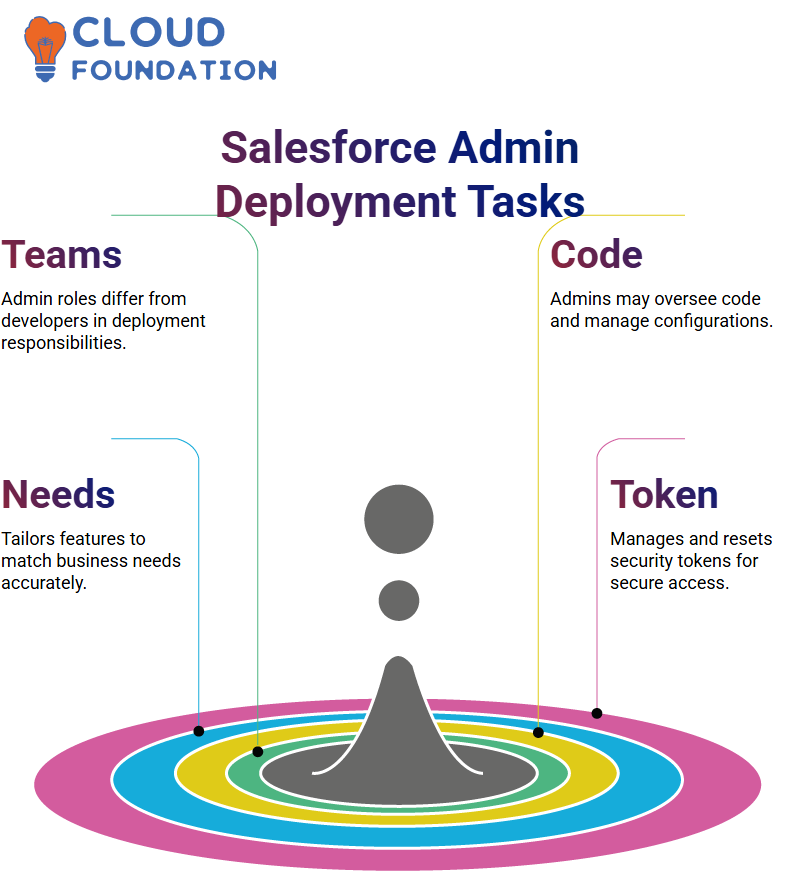 Although Salesforce Administrators (Admins) play an essential role. The work involves tailoring features and settings to suit business requirements.
Although Salesforce Administrators (Admins) play an essential role. The work involves tailoring features and settings to suit business requirements.
Salesforce Admin and Security Token Management
One of the first tasks required as a Salesforce Administrator was resetting the Security token.
If you access Salesforce from an untrustworthy IP address, Salesforce will prompt you to reset it as part of an added layer of protection to safeguard organisation-specific data.
It has been noticed when using browsers such as Mozilla Firefox, which often flag suspicious IP addresses.
Salesforce Admin enables you to manage tokens, ensuring that only trusted IP addresses access your organisation—a crucial step in maintaining a secure environment.
External Authentication and SSO in Salesforce Admin
Single Sign-On (SSO) can be a transformative solution. Salesforce Admin enables me to configure SSO, allowing users to log in once for multiple systems.
Not only is this better for security and user experience purposes, but it’s also faster.

Integrated Salesforce with several external systems, and Single Sign-On has ensured that users don’t need to remember multiple passwords; everything can be managed through the Salesforce Admin, making it much more straightforward.
Granting Login Access as a Salesforce Admin
One of the primary responsibilities as a Salesforce Admin is managing login access for users.
This doesn’t involve clicking a checkbox; instead, customise access levels according to user roles, as well as set expiration dates and define them accordingly.
This control enables me to ensure that every user, from interns to senior analysts, has exactly the access they require—nothing more or less.
That makes the Salesforce Administrator’s role crucial in maintaining an organised and secure organisation.
Salesforce Admin: Broadcasting and Roles
One of the most valuable features in the Salesforce Admin dashboard was its broadcast messaging capabilities.
Create roles and assign broadcast messages directly to them, which makes communication simple and targeted. Broadcasting ensures that information reaches its destination at precisely the right moment.
Have you ever needed to send updates only to one team or department. Salesforce Admin makes this effortless by simply specifying their group or role; your broadcast will only reach them, and communications will improve accordingly.
It’s an efficient and powerful tool for maintaining current communication standards.
Creating and Managing Groups as a Salesforce Admin
Let’s move on to groups: As a Salesforce Admin, you can relish the flexibility of creating public groups on Salesforce.
From offshore teams and on-site departments to cross-functional task forces based on roles or hierarchies, the preference is to create groups based on roles or hierarchies as part of their public profile.
Salesforce Admin helps meet operational demands daily by customising its capabilities specifically to my daily business requirements.
Approval Settings and Hierarchies in Salesforce Admin
The organisation features an established hierarchy, making Salesforce Admin ideal for setting up approval workflows.
When sales reps submit requests, these automatically route back to their manager for review and approval.
Establishing the system was straightforward. Assigned managers to users, and let the system take over from there.
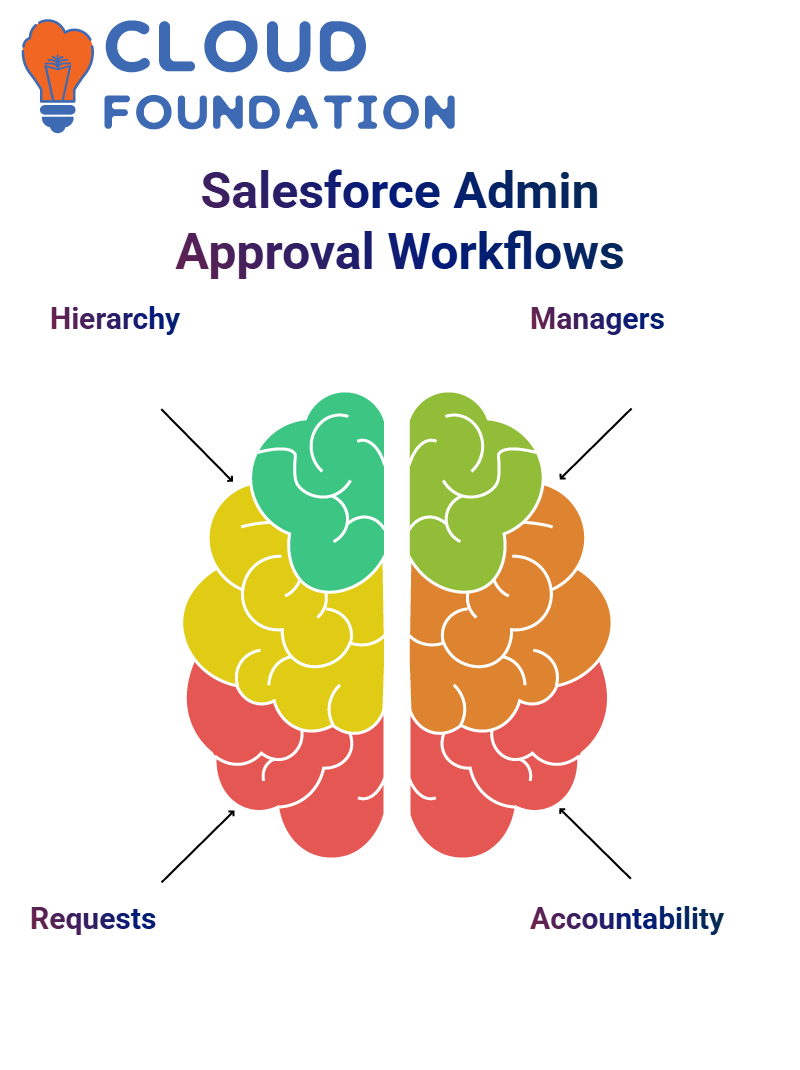 It provides an effective means of maintaining accountability while streamlining decision-making processes.
It provides an effective means of maintaining accountability while streamlining decision-making processes.
Advanced User Details in Salesforce Admin
The organisation features an established hierarchy, making Salesforce Admin an ideal fit for setting up approval workflows.
When sales reps submit requests, these automatically route back to their manager for review and approval.
Establishing the system was straightforward. Assigned managers to users, and let the system take over from there.
It provides an effective means of maintaining accountability while streamlining decision-making processes.
Understanding Connections in Salesforce Admin
Connections in Salesforce Admin enable you to view which external applications are linked to your account.
For instance, it connected mine with the Trial Bridge app, which allows for seamless data flow and authentication across platforms.

As a Salesforce Administrator, you can track and control all connected applications. It is imperative to regularly audit these permissioned apps to ensure that their access remains necessary and secure.
Customisation in Salesforce Admin
customisation through Salesforce Admin’s Developer Console to gain more understanding about its inner workings. Salesforce provides access to classes, triggers, and Visualforce pages, which makes customisation much more manageable than before.
At its heart lies Salesforce’s magic: developers can tailor it to fit specific business requirements while admins like me monitor and oversee these changes.
Managing Objects and Records in Salesforce Admin
Accounts, Leads and Opportunities form the backbone of Salesforce, making me responsible for overseeing these objects to ensure each record contains accurate and up-to-date data.
As a Salesforce Administrator, It charged with maintaining accurate records that contain up-to-date data for these objects.
Each record, or “Rick card”, holds valuable details about an individual or opportunity. I spend much of my time organising and updating these files to maintain clean data that’s easily actionable.
Salesforce Admin Managing Leads
Salesforce Admin’s leads feature makes it less daunting to work with. Once it was understood where all the information was stored and how to navigate the system effectively, recording every lead became second nature.
For every lead you receive in Salesforce Admin, it must be recorded correctly, so go directly into Leads tab, click ‘New Lead’ button, and begin entering details for it.
Each lead contains essential details, including their contact info and product interests, that have been selected based on permissions set by your Salesforce Admin.
Initially, only certain items may appear; however, these can easily expand to suit your organisation’s needs best.
One key point to always emphasise when discussing Salesforce Admin leads is the importance of red asterisks indicating required fields, as missing these will prevent you from saving a record and creating leads successfully in Salesforce Admin.
Salesforce Lead Status and Workflow
Once a lead has been created in Salesforce Admin, its progress can be tracked through various statuses, including New, Working, and Converted. When a lead is first entered, it’s marked as ‘New.’
As soon as engagement begins with the lead, the status changes to ‘Working.’ Once the lead is qualified, the status changes back to ‘Converted.’
Salesforce Admin makes use of an integral workflow feature called lead tracking that assists sales teams in understanding where each lead stands in their pipeline, an essential element in what we refer to as “selling process.”
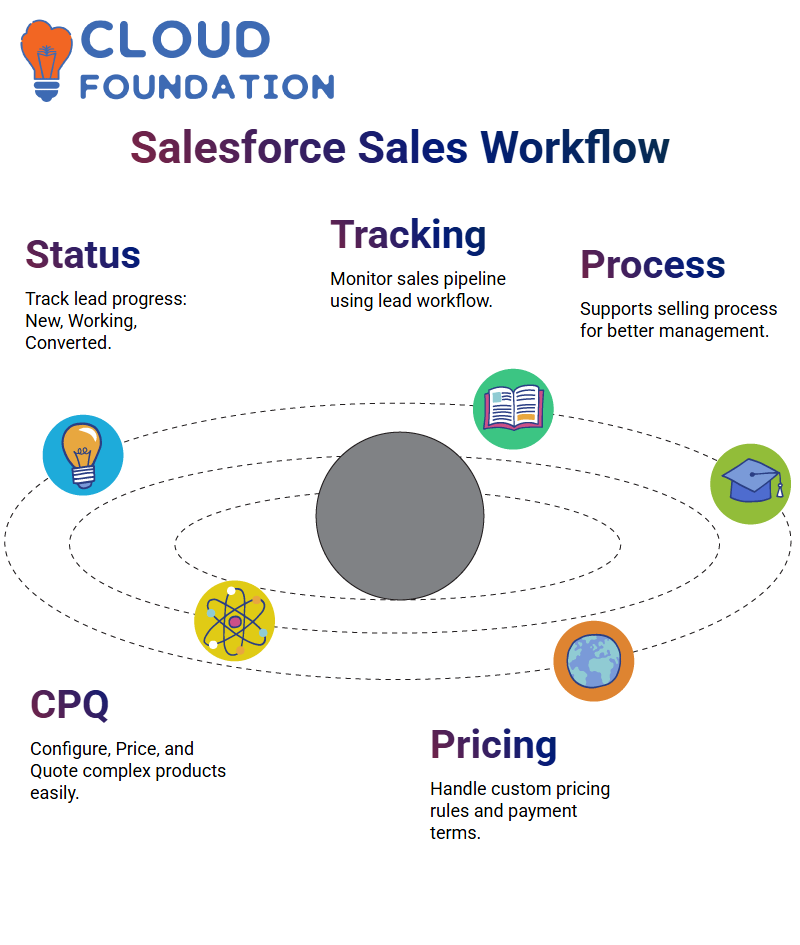 Salesforce Admin plays an integral part in helping define and oversee these processes.
Salesforce Admin plays an integral part in helping define and oversee these processes.
Features in Salesforce Admin: CPQ and Beyond
As we deepen our Salesforce Admin knowledge, we begin exploring advanced modules like Configure, Price and Quote (CPQ), which is an essential tool that streamlines sales processes when dealing with complex pricing or product configuration.
CPQ helps streamline this aspect of sales by facilitating complex configurations with pricing structures that require special handling.
Salesforce Admin CPQ (Customer Price Quotes) is considered an advanced extension of the sales module, handling everything from pricing rules to payment terms.
Understanding CPQ in its broader Salesforce context is crucial, as it demonstrates how Salesforce Admin extends far beyond data entry to enable smarter, more effective business processes.

Salesforce Course Price


Vinitha Indhukuri
Author

